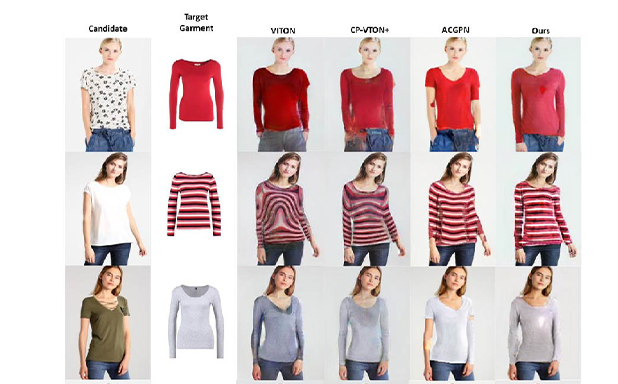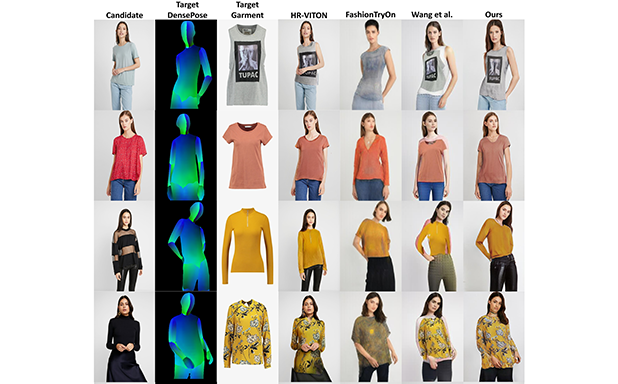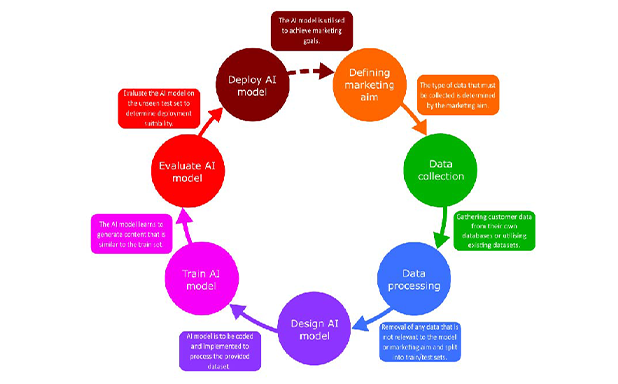Millions of us choose to shop online for groceries, gifts and gadgets, but when it comes to garments and fashion items, shopping online is often a gamble. A new study from Brunel University London has explored how generative artificial intelligence (AI) — a technology that allows computers to create new content such as images and videos using existing images — can be used by businesses to successfully market their products, enhancing the customer experience and ensuring they get the perfect fit.
Due to its convenience, time-saving nature and practicality, online shopping has become incredibly popular. Purchasing the weekly food shop can be a pretty straightforward task online, but clothing and fashion items can be more of a challenge. The inability to physically try on a garment before making a purchase can lead to higher return rates, and a poor shopping experience.
Generative AI is a sophisticated form of artificial intelligence that uses deep-learning — an AI method that teaches computers to process data in a way that is inspired by the human brain — to generate text, images and videos. In recent years, computer scientists have extensively researched this field to provide innovative solutions for businesses and their customers. Virtual makeup transfer is an example of a generative AI model that allows customers to virtually try on different cosmetic products to enhance their shopping experience.
Researchers from Brunel University London have explored how generative AI can be used as a successful marketing tool to improve a business’s revenue and the online shopping experience for customers. “One of the primary benefits of using generative AI technology in marketing is that it reduces the amount of human effort required to create marketing material,” explained Mr Tasin Islam, a computer scientist from Brunel, who led the research. “Designing and editing are specialised, time-consuming tasks that can be streamlined by generative AI, saving time and reducing costs.”
Mr Islam explained that very few businesses are currently using generative AI as a digital marketing tool, and he aims to highlight the positive impact that it can have on businesses and their customers.
“Generative AI has been used widely for entertainment purposes, but I want to show how it can be used by businesses to achieve their marketing goals while providing a more enjoyable online shopping experience for customers.”
Image-based virtual try-on
Image-based virtual try-on technology is a generative AI model that allows customers to swiftly experiment with clothing to assess how a garment will look on them. “Fashion companies can now make a profound impact on customers by using a virtual try-on model that can fuse the images of their clothing and customers,” explained Mr Islam. “By harnessing the power of generative AI, fashion companies can create unique and customised content that resonates with their target audience, allowing them to interact with clothing and providing them with the same feelings that they would experience in a store.”
As part of their research, Mr Islam and his team produced an image-based virtual try-on model that focused on upper- body clothing. Over 16,000 pairs of images were used to train the technology, pairing female models with stand- alone images of the clothing they were wearing.
Their extensive computer learning and training of the model resulted in realistic and accurate images that superseded existing image-based virtual try-on models.

Image-based virtual try-on model created by the researchers, in comparison with other models
As part of the research, the computer scientists created generative AI technology that changed the pose of the person wearing clothing, so they could see it from different angles. Again, their model generated superior results to other models.
“This personalised immersive experience can impact a customer’s perceptions and engagement with a business, and they are more likely to feel confident in their purchase,” explained Mr Islam.

Multi-pose virtual try-on model created by the researchers, in comparison with other models
“The tool will mitigate hesitations and uncertainties associated with the inability to physically try on clothing before purchasing, and additional benefits include higher customer satisfaction rates, reduced returns resulting in a lower carbon footprint, and increased business sales.”
Image-to-video
The researchers also used generative AI to createshort videos from the virtual try-on images to offer an even more personalised experience and additional information about how an item of clothing would look. As with the image-based virtual try-on model, the researchers trained the technology to produce realistic and seamless movements, by exposing it to a diverse range of videos featuring individuals wearing different types of clothing.
“The use of image-to-video models has the potential to revolutionise the way that businesses present their content to consumers and should be considered a valuable addition to any marketing strategy,” explained Mr Islam.
A generative AI model framework for businesses
As part of their research, the team of computer scientists created a framework called MARK-GEN which is essentially a flow-chart guide for businesses to follow when incorporating generative AI models on their digital platforms.
“The first step in the framework involves businesses setting their objectives for the model they are using, which involves defining a clear marketing aim regarding what it wants to promote and achieve,” explained Mr Islam.

MARKGEN - framework for implementing generative AI in business
The framework also includes data collection and training a model for the desired function. “The successful training of a generative AI model requires gathering a significant amount of data,” explained Mr Islam. “When implementing an image-based virtual-try-on model for clothing, it is crucial to expose it to a diverse and varied set of training data that includes pairs of people wearing clothing alongside the clothing as a stand-alone image,” he added. “This is to ensure that it accurately learns how to apply the garment to a person’s body in a realistic way.”
Mr Islam emphasises the importance of testing and evaluating a model before deploying it. “If an image-based virtual try-on model achieves high accuracy and performs well on a set of test images with previously unseen combinations of clothing and individuals, it indicates that the model has learned to generalise effectively and can generate convincing try-on images,” explained Mr Islam. “However, if the model performs poorly on the test set, it suggests that it might be lacking the ability to handle unseen data, prompting further refinement or improvement before deployment.”
The Brunel expert explains that the framework is not limited to the fashion industry and can be applied across various other sectors to benefit their digital marketing and customer experience. This could include property demonstrations in real estate, personalised itineraries in travel, hotel promotions in hospitality and driving experiences in the automobile industry.
“By leveraging the capabilities of generative AI, businesses can create marketing campaigns that are both efficient and effective, saving time and resources while achieving their marketing aims and simultaneously increasing their potential for success,” he said.
‘Transforming Digital Marketing with Generative AI’, by Tasin Islam, Alina Miron, Monomita Nandy, Jyoti Choudrie, Xiaohui Liu and Yongmin Li, is published in Computers.
Reported by:
Nadine Palmer,
Media Relations
+44 (0)1895 267090
nadine.palmer@brunel.ac.uk